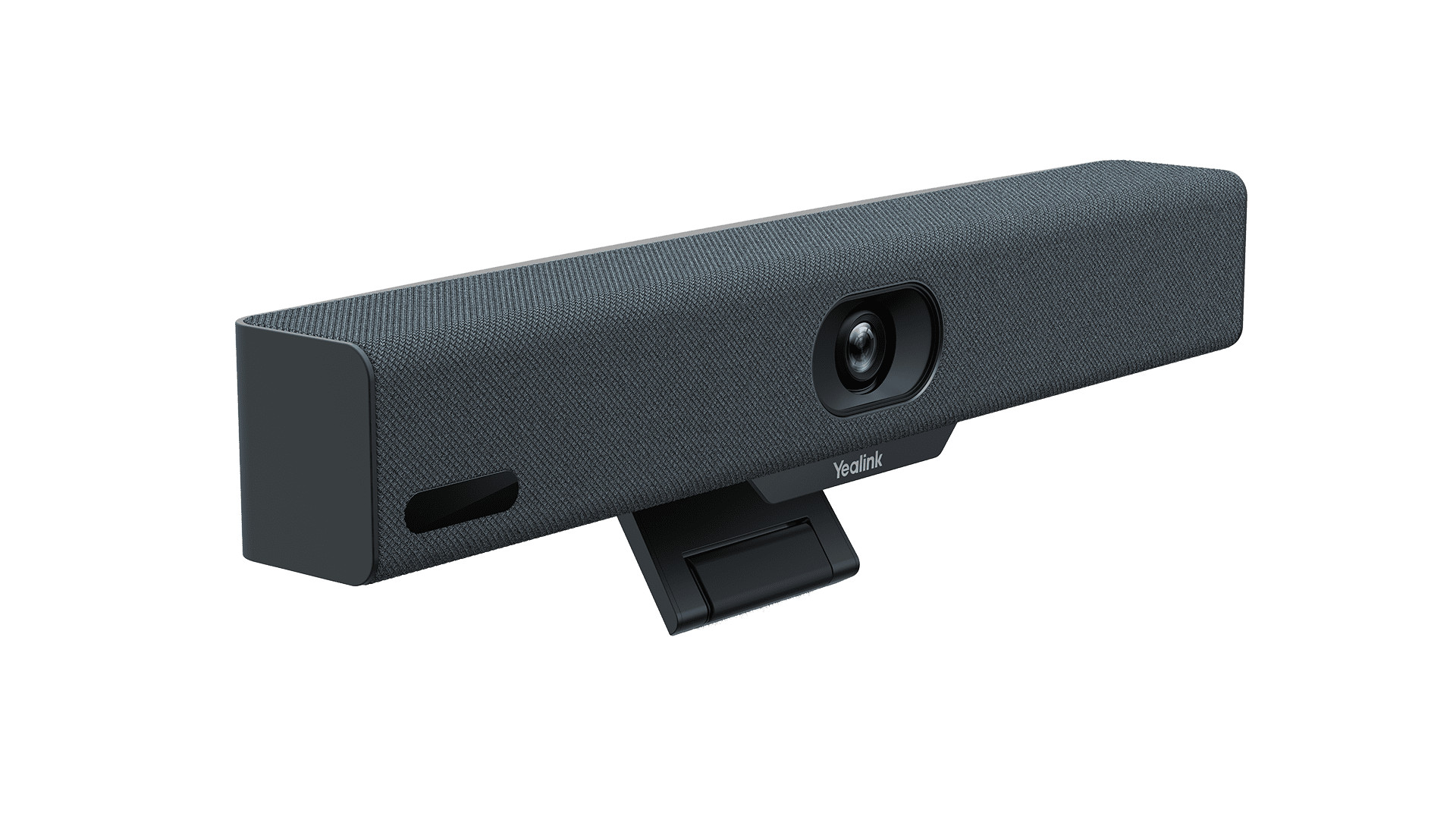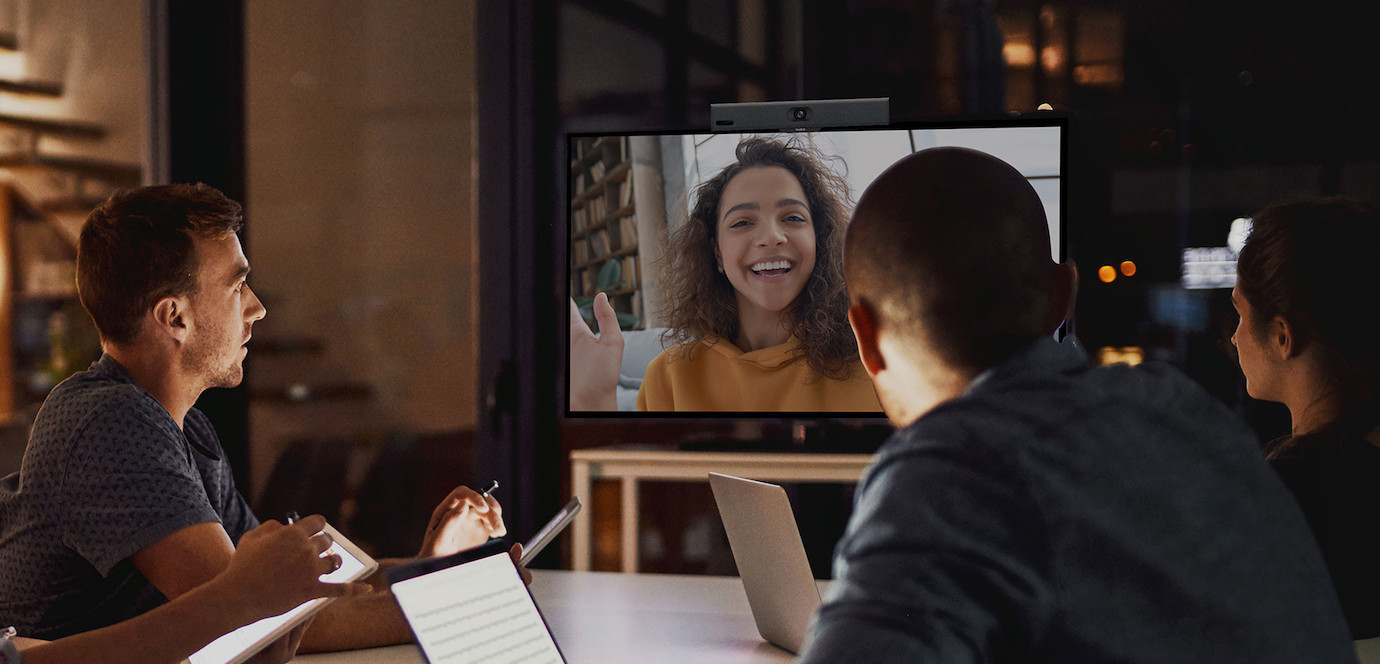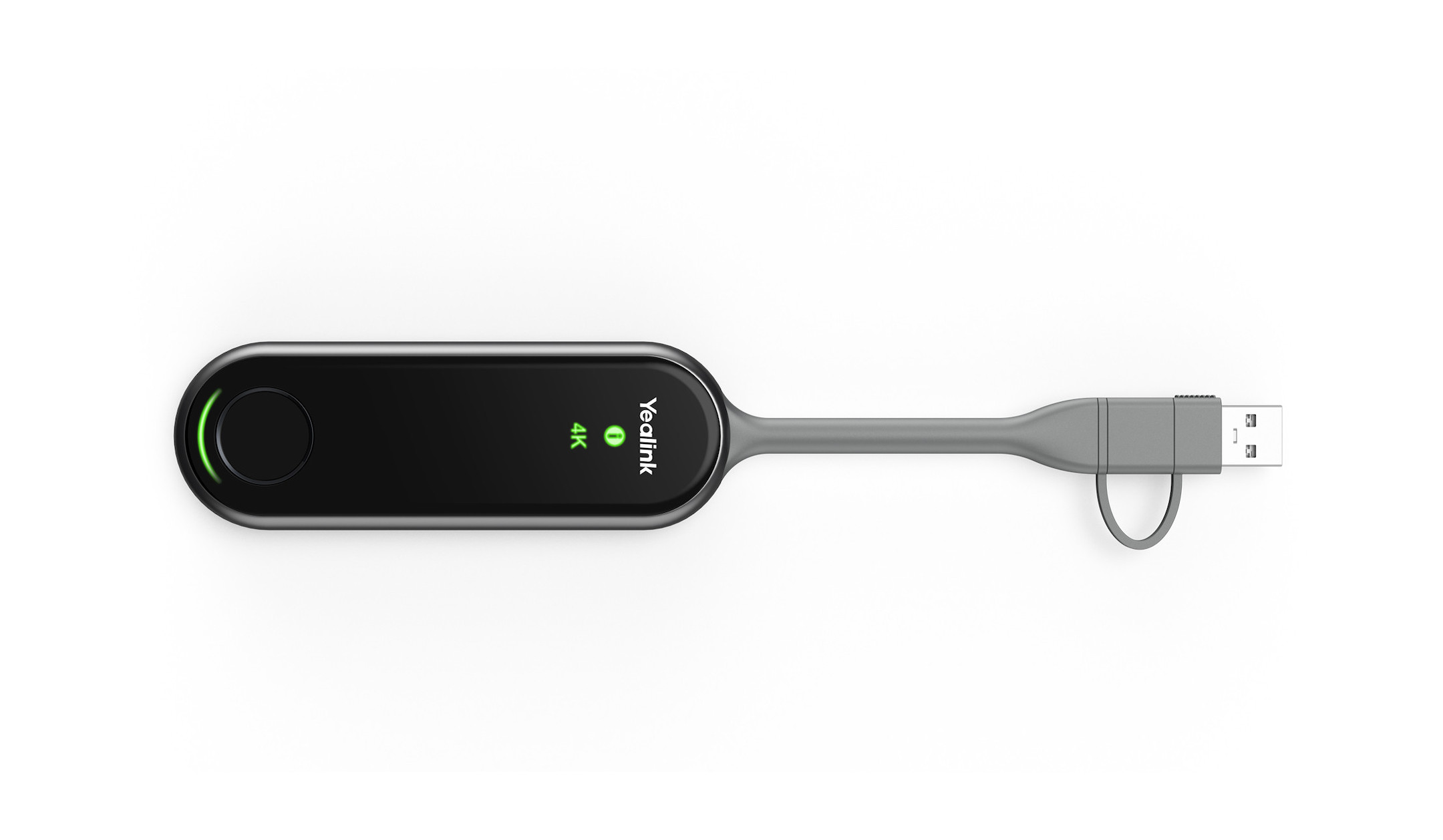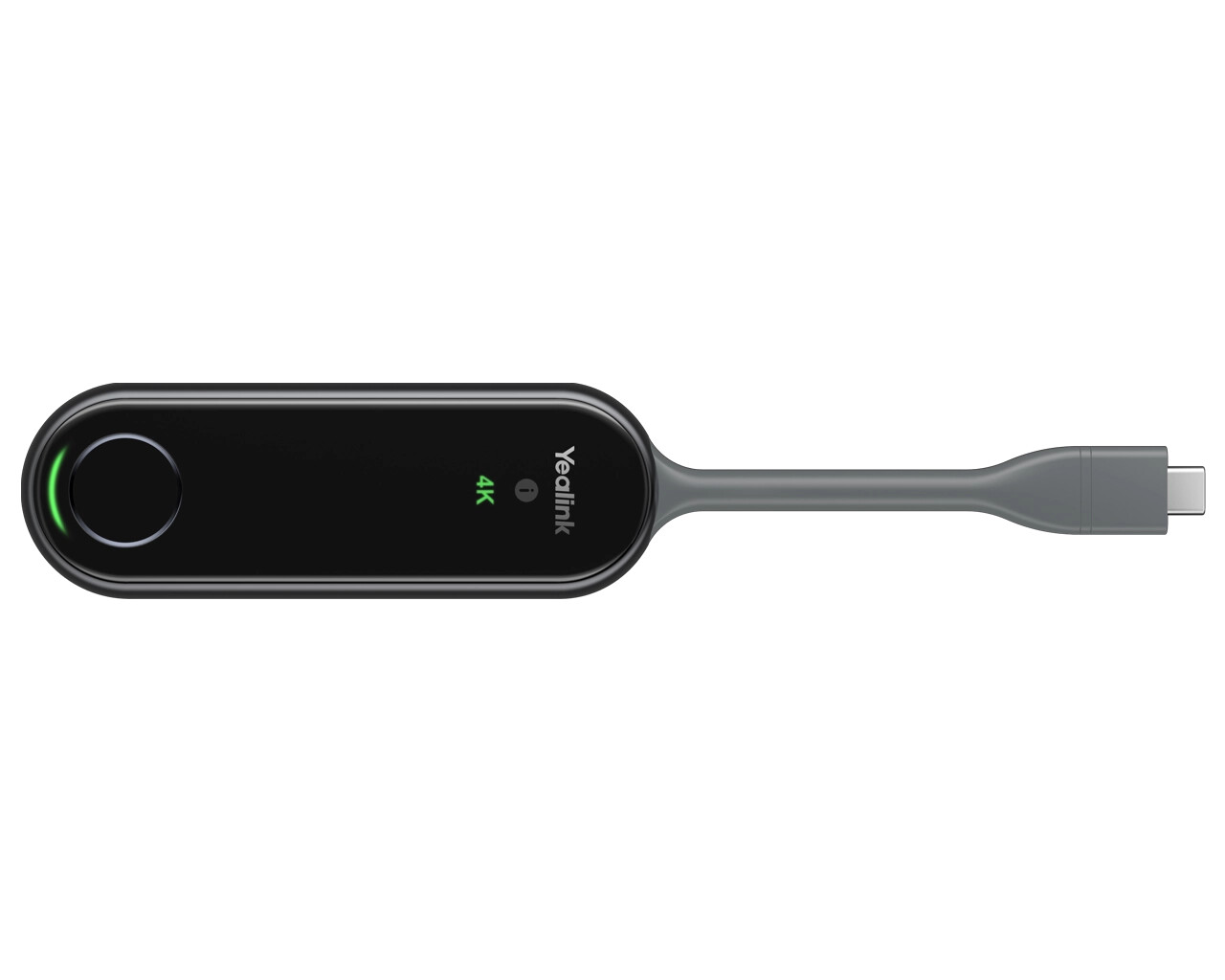











£759.70*
- Resolution 3840 x 2160 4K UHD
- Camera resolution 8 MP
- Field of view 120°


Frequently purchased together
Product information
The Yealink MeetingBar A10-010 redefines the way you experience video conferencing in small to medium spaces such as huddle rooms and home offices. This elegant all-in-one device harmonises perfectly with modern working environments and brings advanced technology directly into your meeting room.
4K EXCELLENCE: CLEAR & VERSATILE
This state-of-the-art conference camera supports leading video platforms such as Microsoft Teams and Zoom and shines with its versatility in device mode. Equipped with a powerful 8 megapixel 4K camera, the MeetingBar A10-010 offers outstanding image quality. The innovative functions such as Auto Framing and Speaker Tracking ensure that every participant is clearly visible, which is particularly beneficial in huddle rooms.

CRYSTAL CLEAR: INNOVATIVE AUDIO PERFECTION
The integrated 8 MEMS microphone arrays and high-quality speakers cover the entire room and offer an outstanding full-duplex audio experience. Thanks to Yealink's advanced AI-based noise cancellation, your communication will be even clearer. This intelligent technology uses a comprehensive deep learning sound database to effectively minimise distracting background noises such as keystrokes, mouse clicks and footsteps, so you can focus on what matters most - crystal clear audio quality.
WIRELESS MEETINGS: SIMPLE & EFFICIENT
The MeetingBar A10-010 opens up a completely wireless meeting experience with the optional WPP30 accessory. Not only the sharing of content, but also the operation of the device can be done wirelessly. Stream 4K video seamlessly and without complicated configurations - a true plug-and-play solution that takes your meetings to the next level.
EXPERIENCE THE FOLLOWING TECHNICAL HIGHLIGHTS:
- 8MP camera: A high-resolution camera with 8 megapixels that delivers sharp and clear images for video conferencing.
- 4K resolution: The camera offers Ultra HD resolution, which means that videos and images are captured with extremely high detail.
- 120° FoV (Field of View): A wide 120 degree field of view allows the camera to capture more of the room and participants, ideal for group meetings.
- 4x Zoom e-PTZ: Electronic Pan-Tilt-Zoom (e-PTZ) with 4x zoom for flexible image framing without loss of quality.
- Automatic privacy shutter: An integrated camera cover that closes automatically to protect privacy when the camera is not in use.
- 8 MEMS microphones: Eight high-quality microphone arrays ensure excellent audio recording and clear voice transmission.
- Yealink Noise Proof Technology: This advanced technology reduces background noise and improves speech intelligibility during video conferences.
- Echo Cancellation: This function eliminates echoes and feedback, ensuring clear and interference-free audio communication.
- Full Duplex: Enables simultaneous speaking and listening without audio dropouts, similar to a natural conversation.
- Auto Framing, Speaker Tracking & Smart Gallery (Zoom only): automatic image adjustment and focussing on the speaker as well as a smart gallery view that is only available when used with Zoom.
- Android 11: The device runs on the Android 11 operating system, which offers an intuitive user interface and compatible apps.
- VCR11 remote control: A user-friendly remote control that enables easy control and navigation of the MeetingBar.
- 2-year hardware warranty: Security through a two-year hardware warranty, providing additional reliability and confidence in the product.
Technical data
| Name | Yealink A10-010 MeetingBar, 3840 x 2160 4K UHD, 8 MP, 120° FoV |
|---|---|
| Article number | 1000027008 |
| GTIN/EAN | 6938818312418 |
| Manufacturer SKU | 1203680 |
| Model name | A10-010 |
| Brand | Yealink |
| Product Type | Conference Camera |
| Resolution | 3840 x 2160 4K UHD |
| Focus type | Manual & automatic focus |
| Camera resolution | 8 MP |
| Field of view | 120° |
| Inputs | 1x Ethernet , 1x HDMI , 1x USB-A , 1x USB-C |
| Outputs | 1x HDMI |
| wireless technology | Bluetooth |
| Features | Microsoft Teams |
| Product width | 38 cm |
| Product height | 8.2 cm |
| Product depth | 6.8 cm |
| Weight | 0.8 kg |
| Colour | Black |
| Delivery contents | HDMI Cable , Power cable |
| Condition | New |
| Warranty | 24 Month |
| Warranty type | Bringin service Service and support information |
Product safety
| Person responsible for the EU |
|---|
| ALSO Deutschland GmbH |
| Ernst-Heinkel-Str. 4 |
| 94315 Straubing |
| Germany |
| sales@yealink.com |





